Teachers share experiences applying for Teaching Practice Research Program
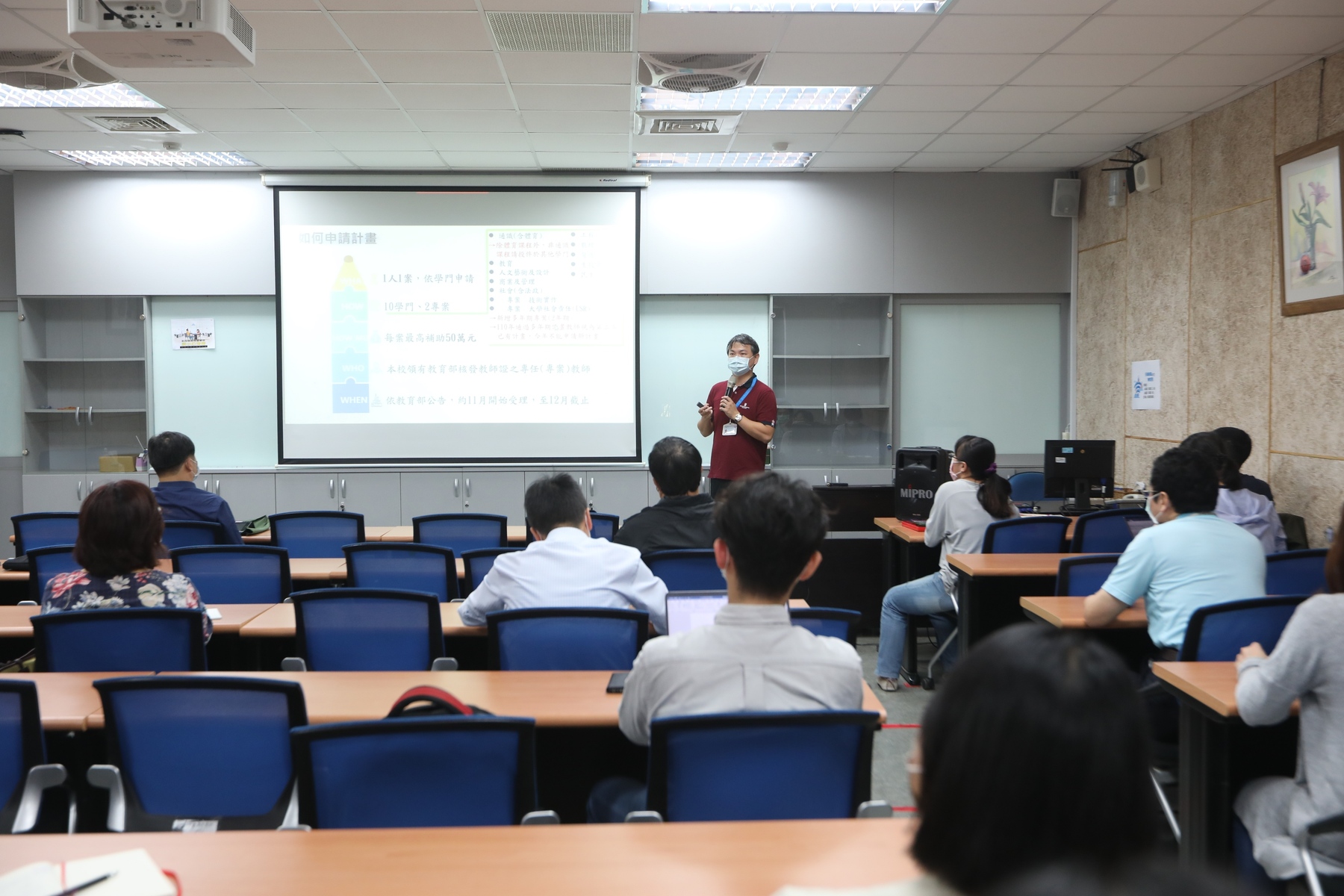
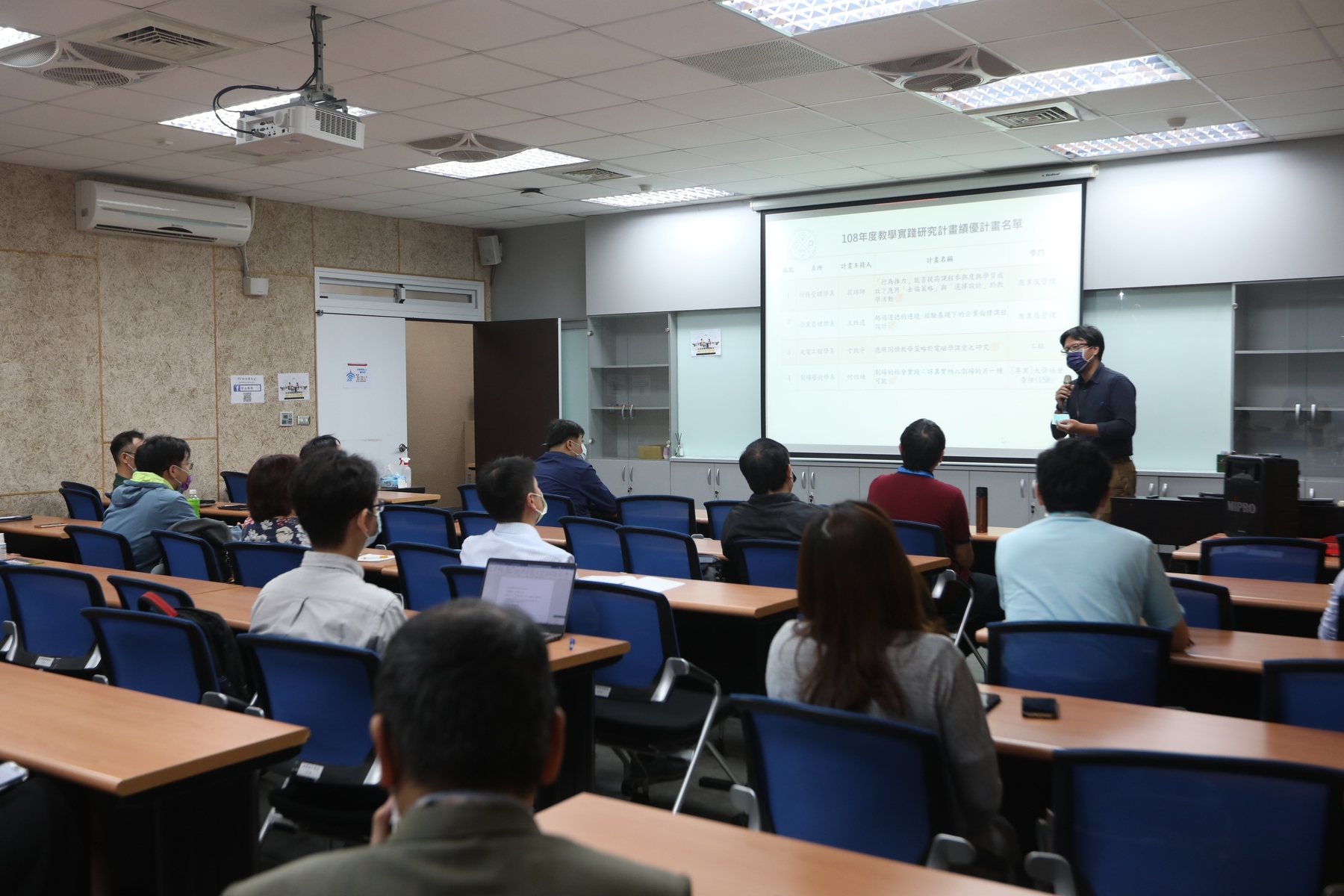
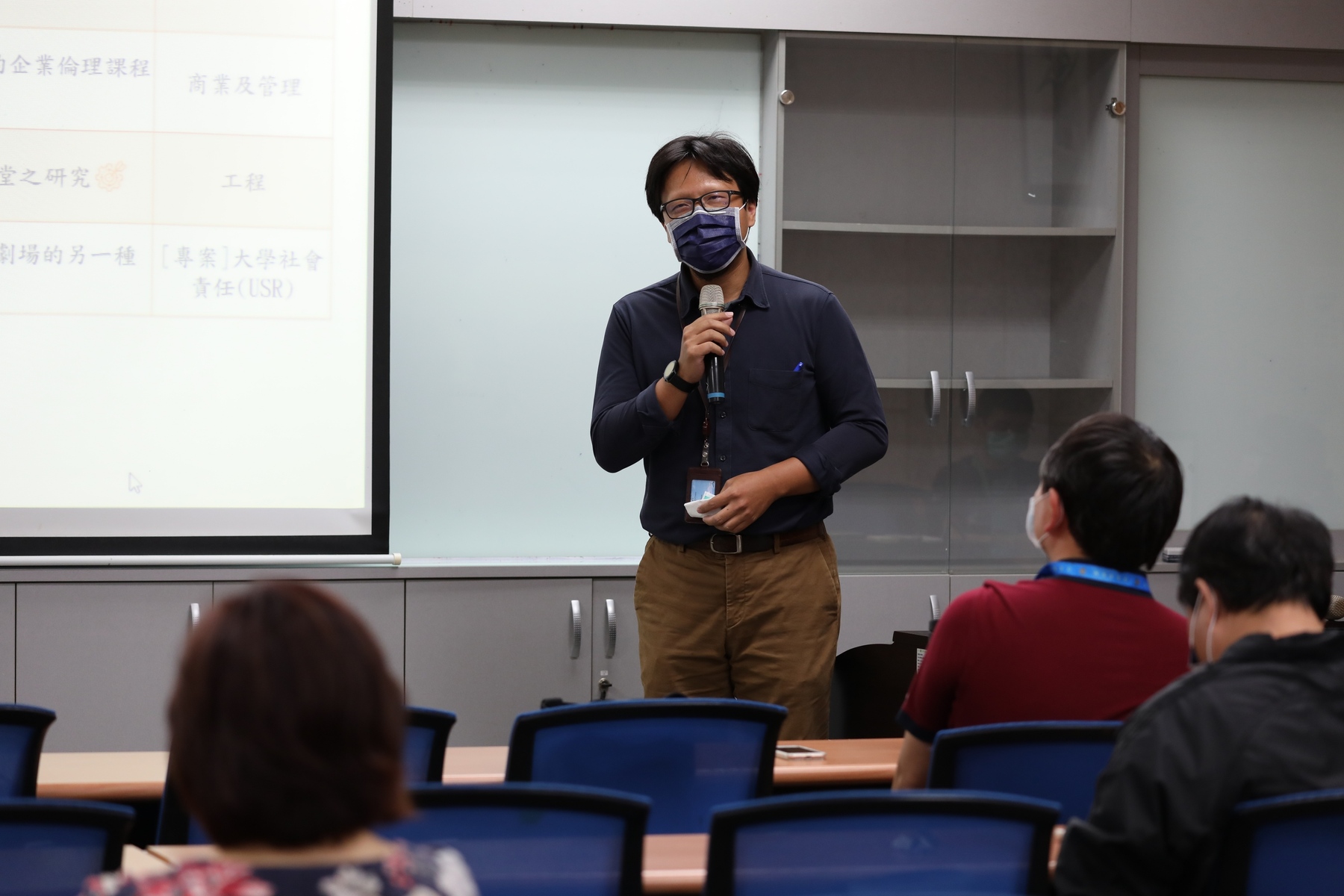
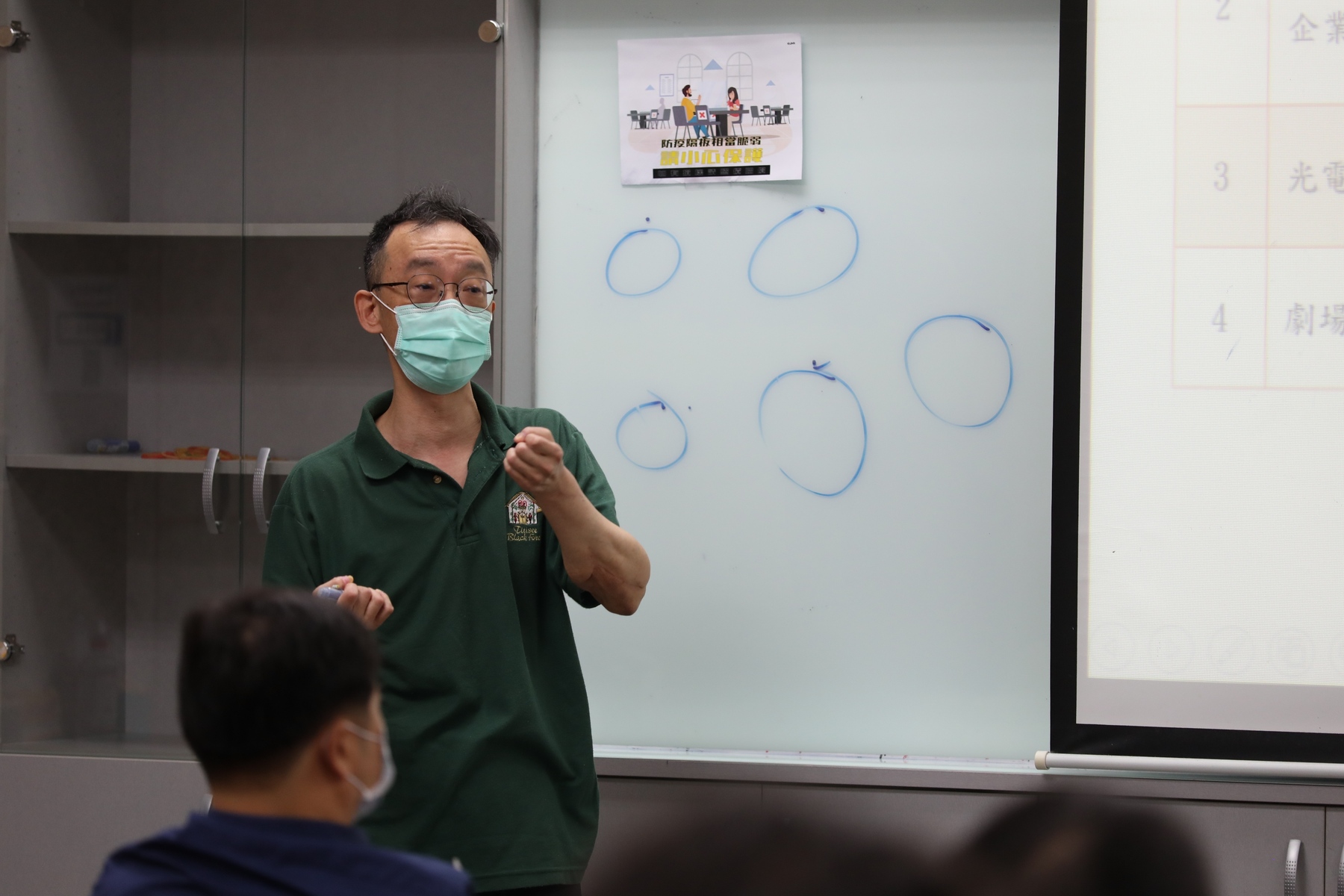
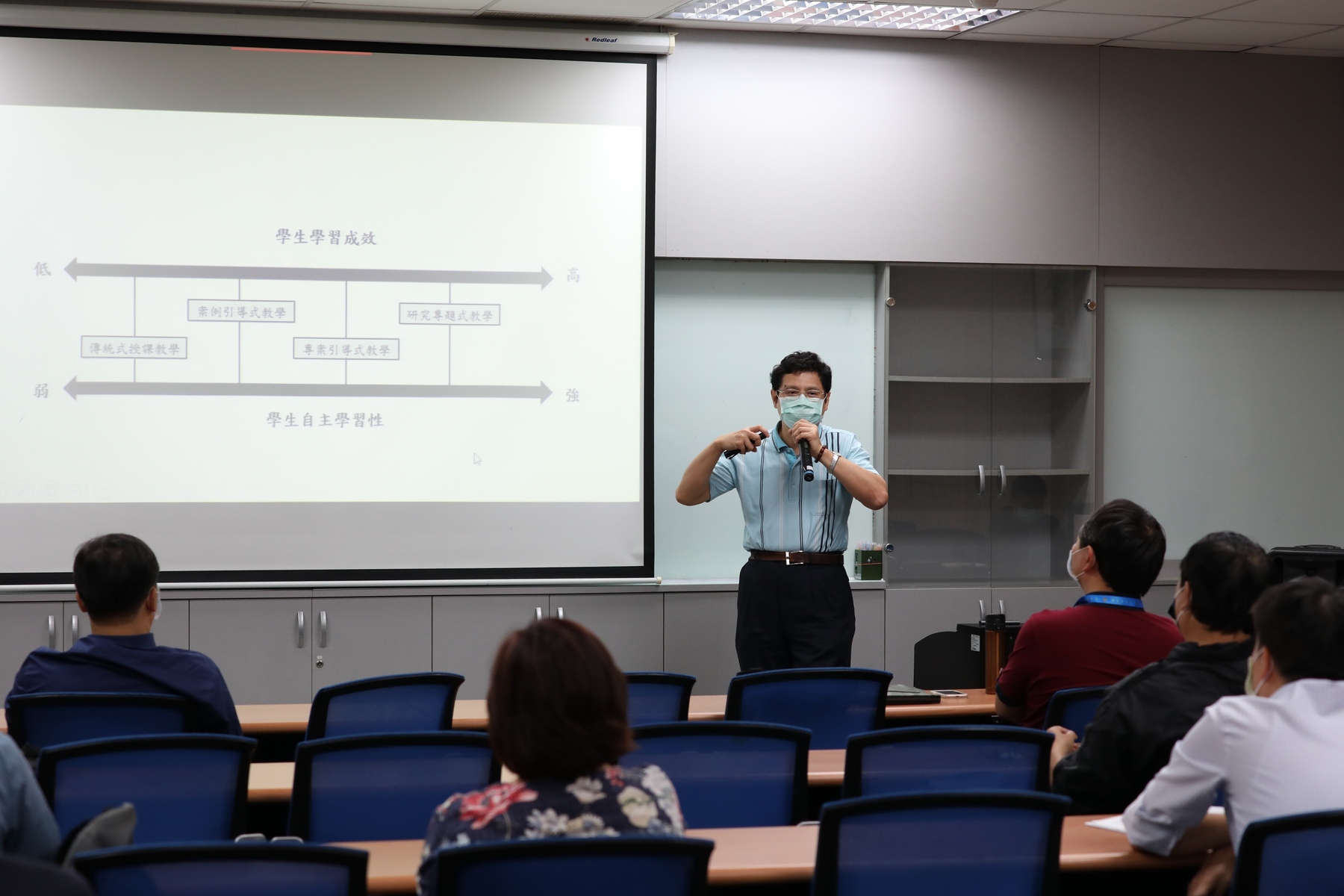
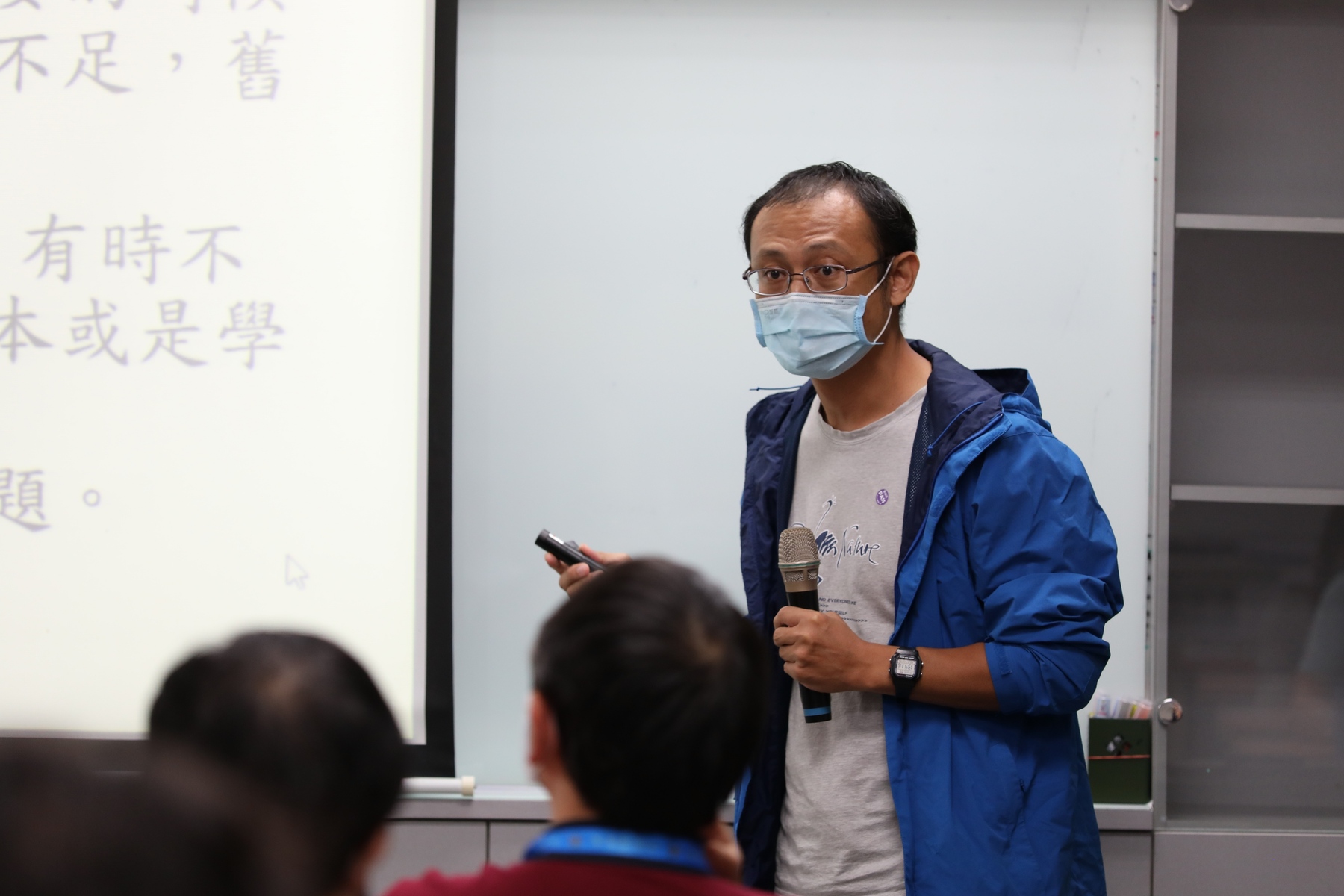
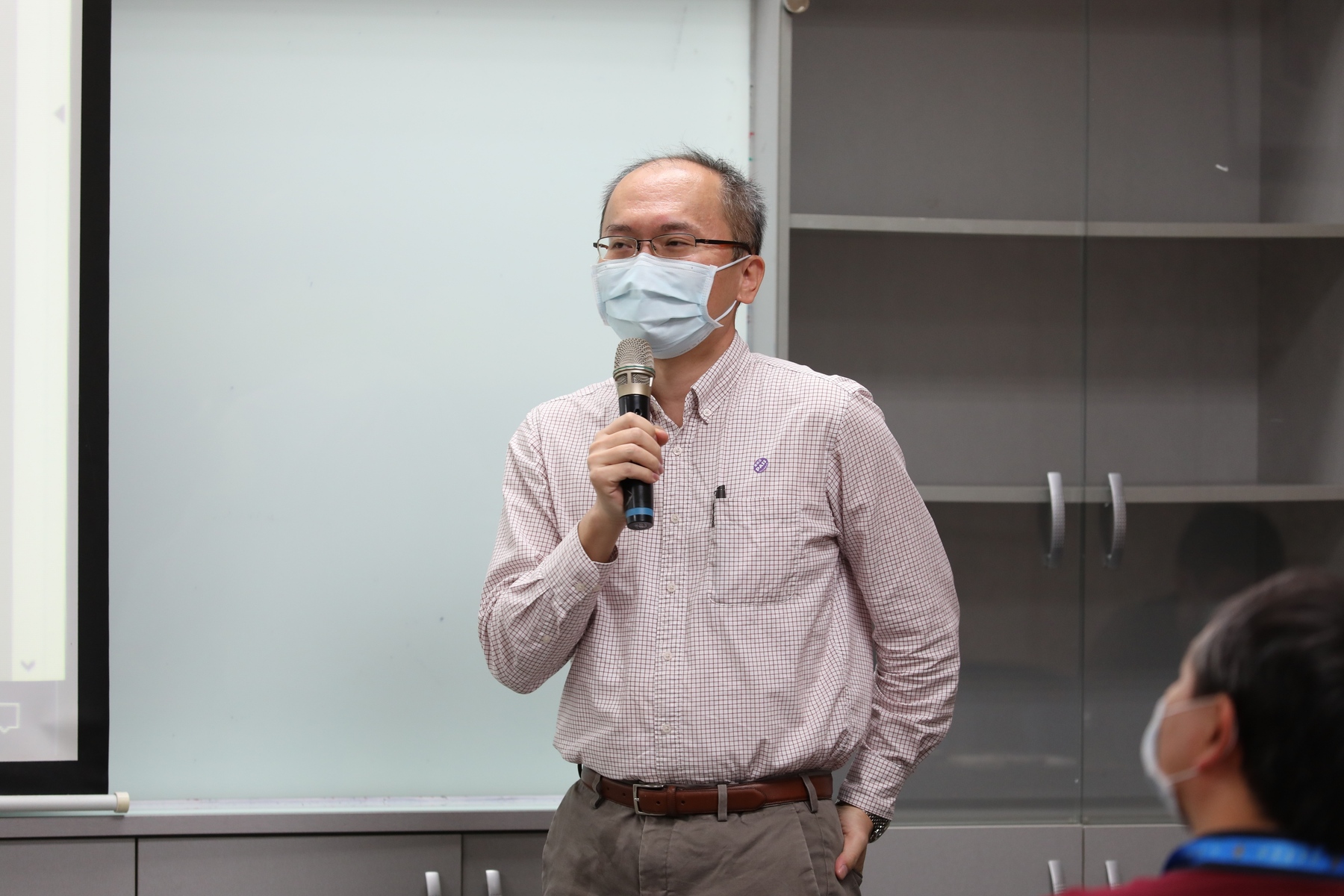
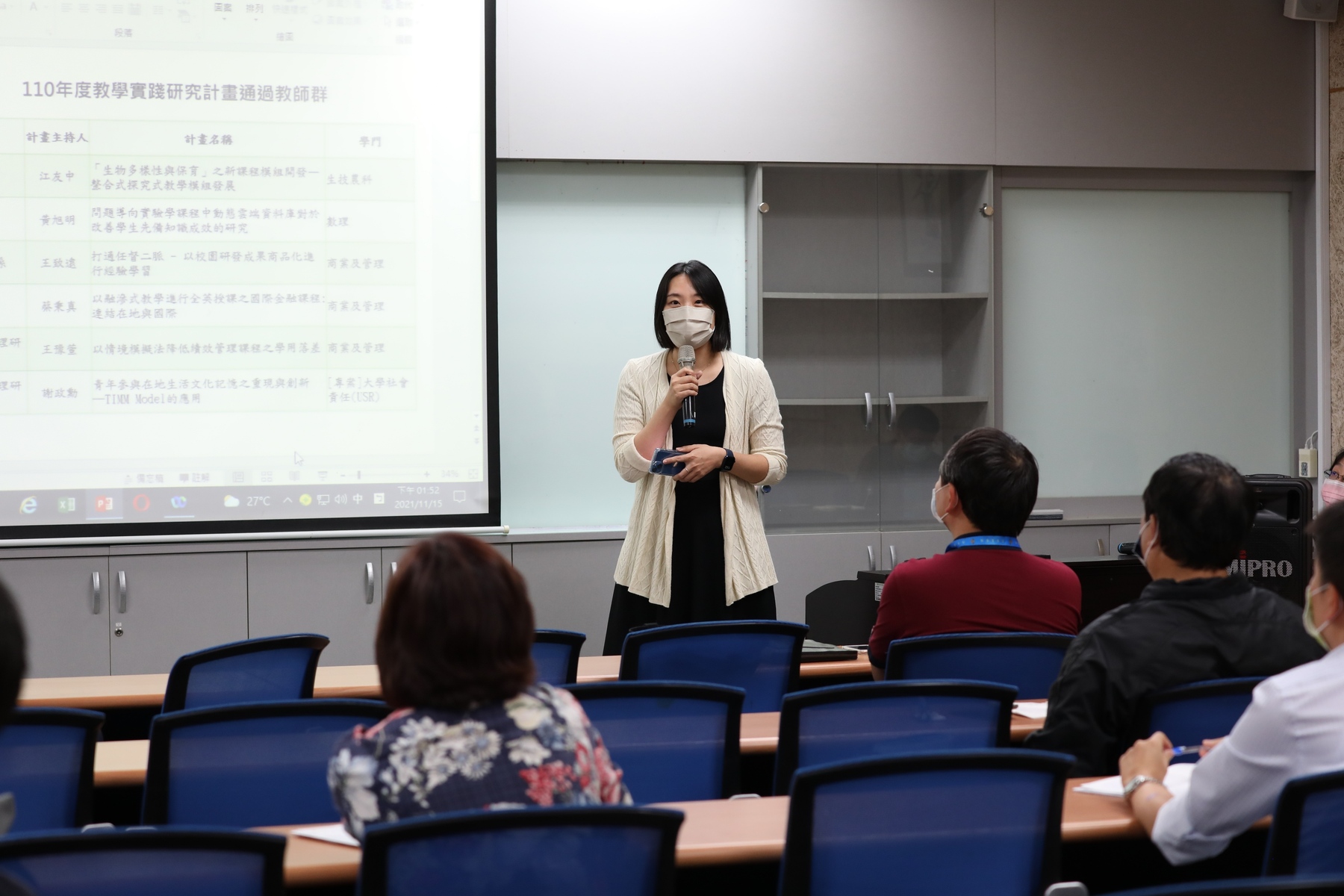
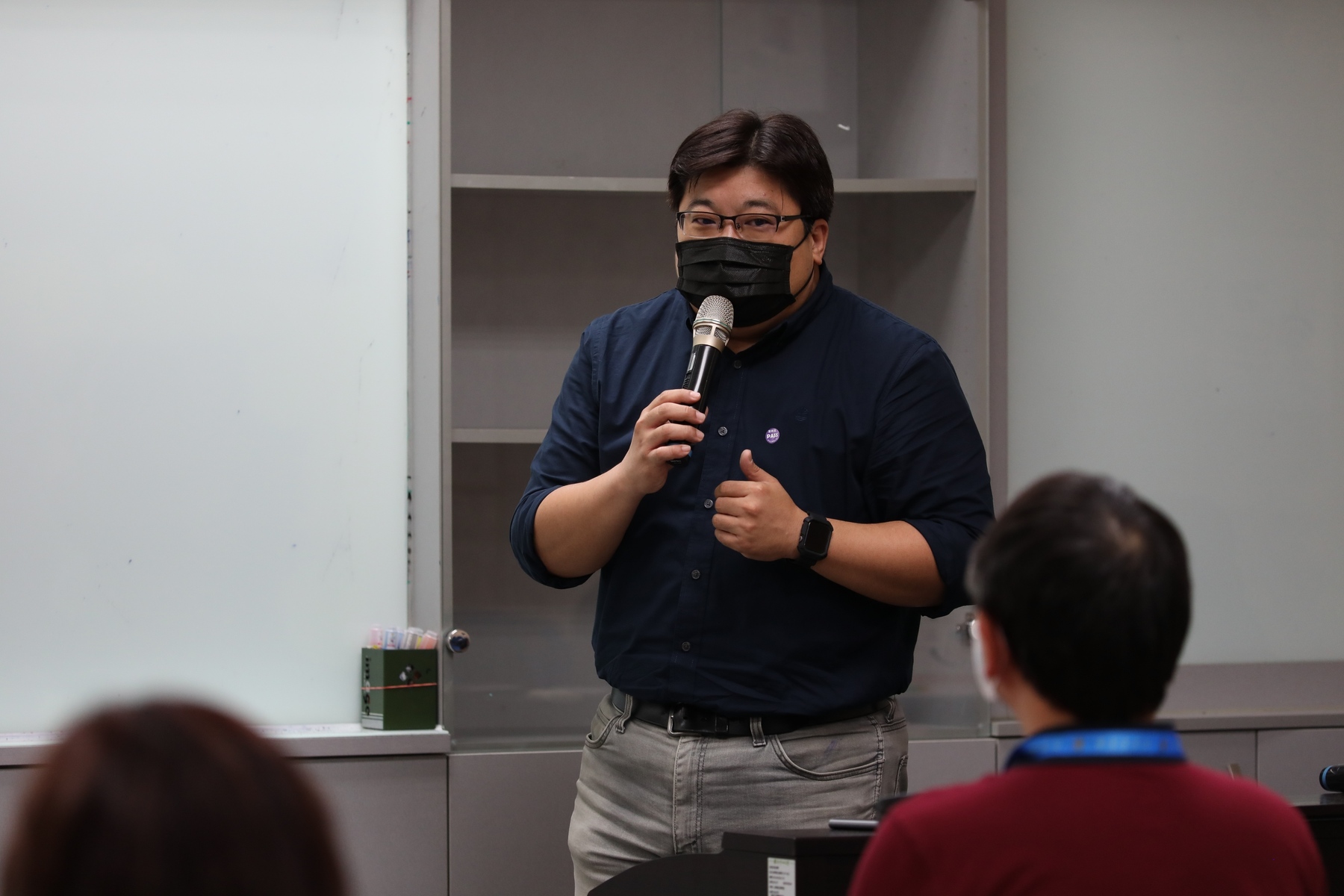
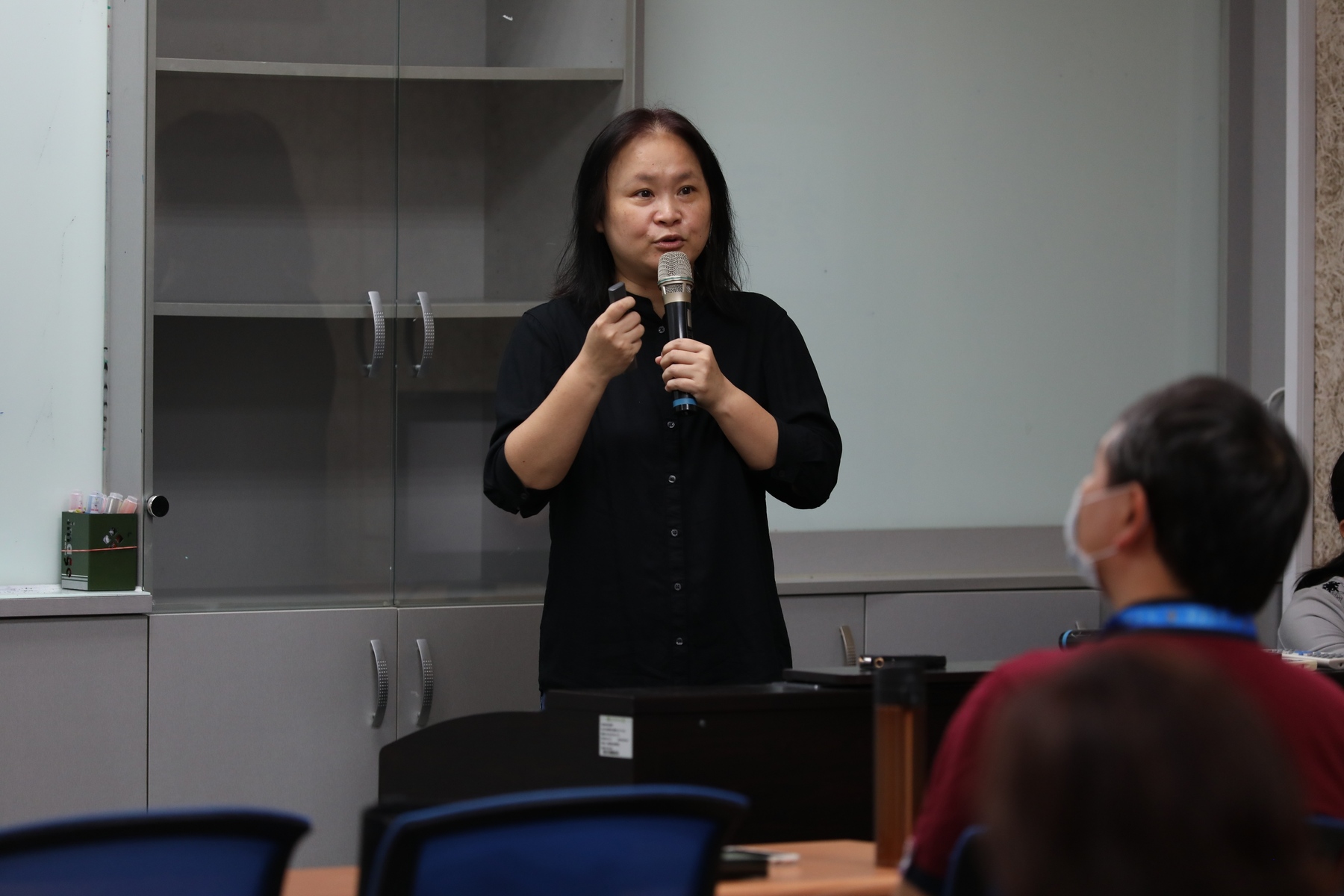
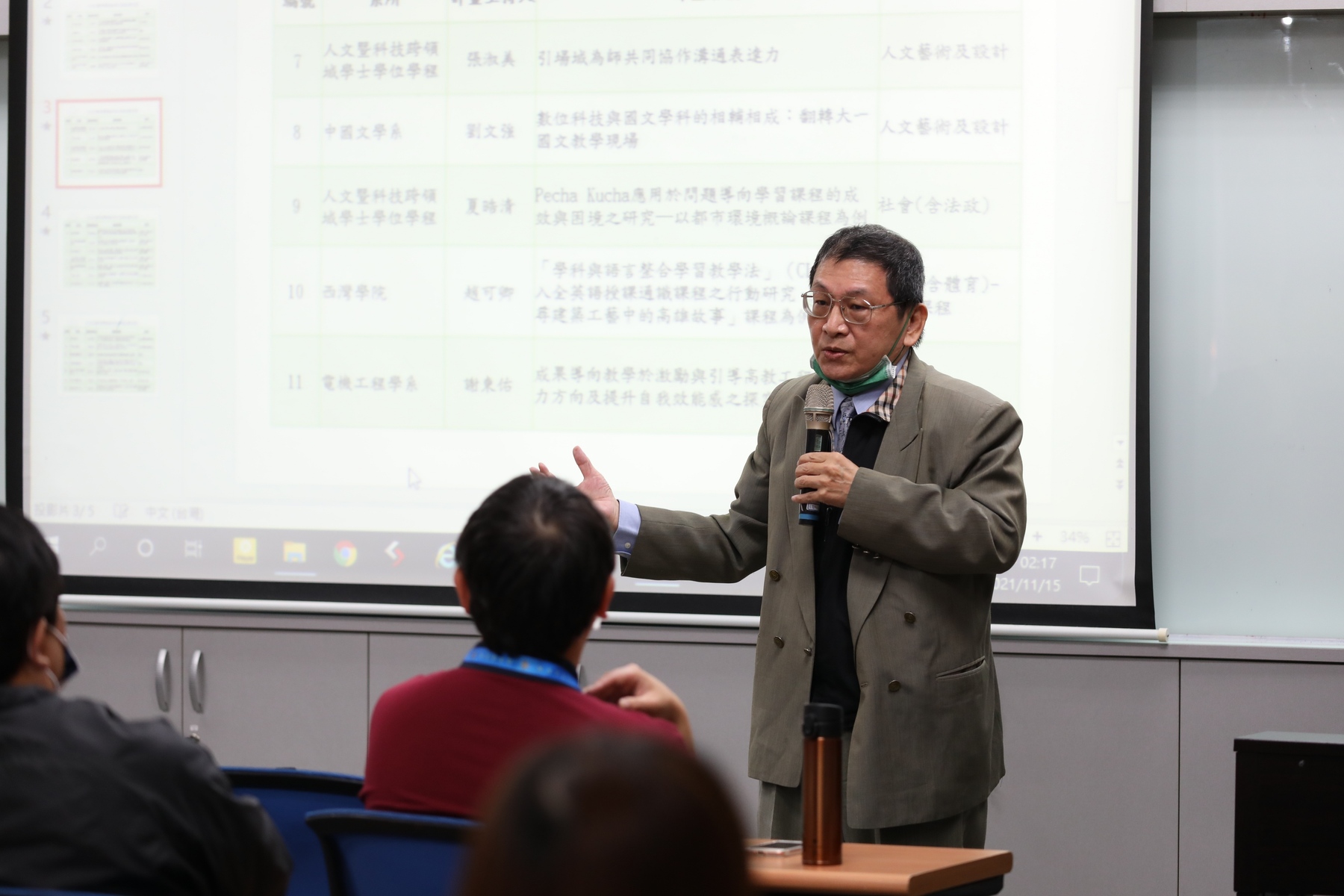
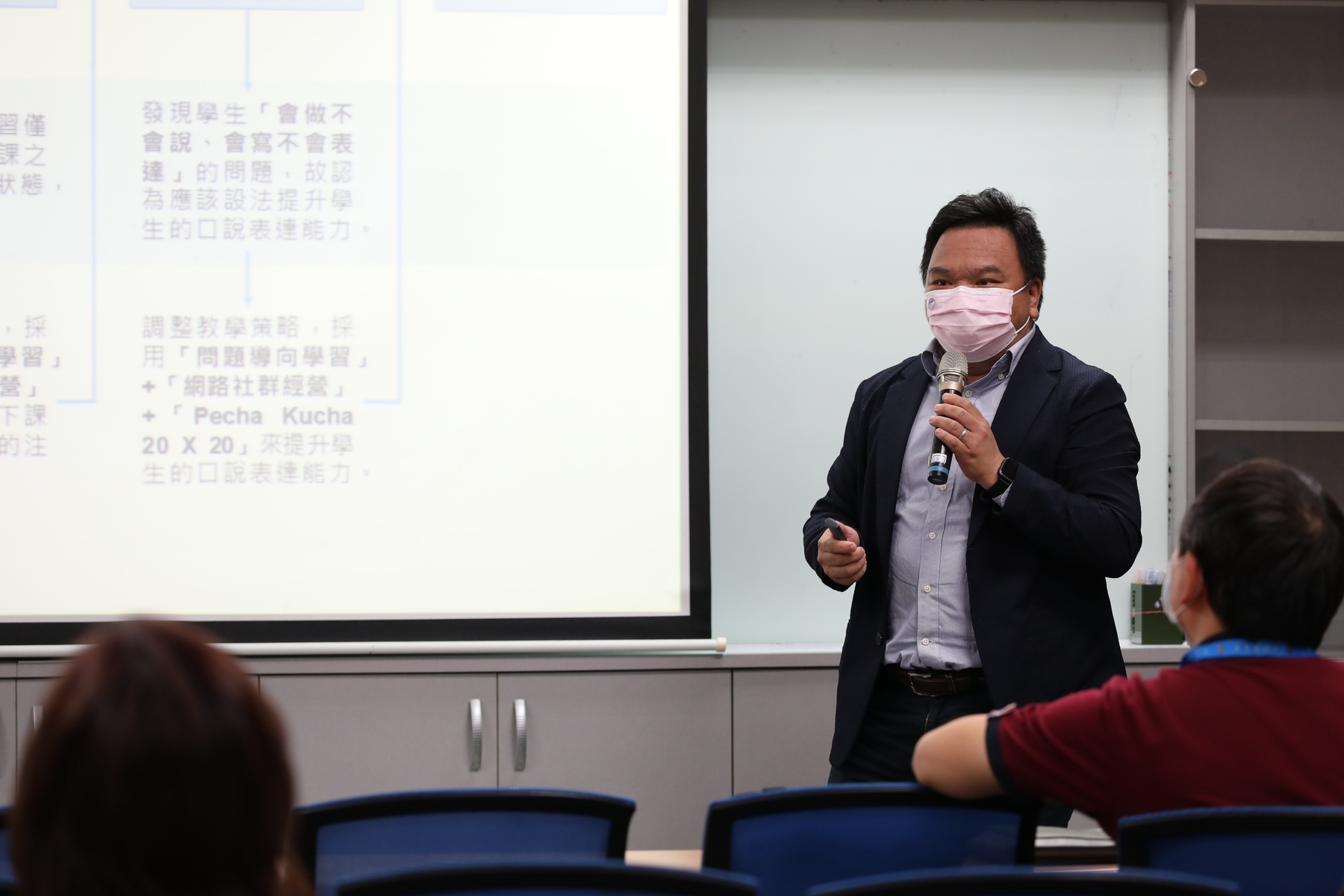
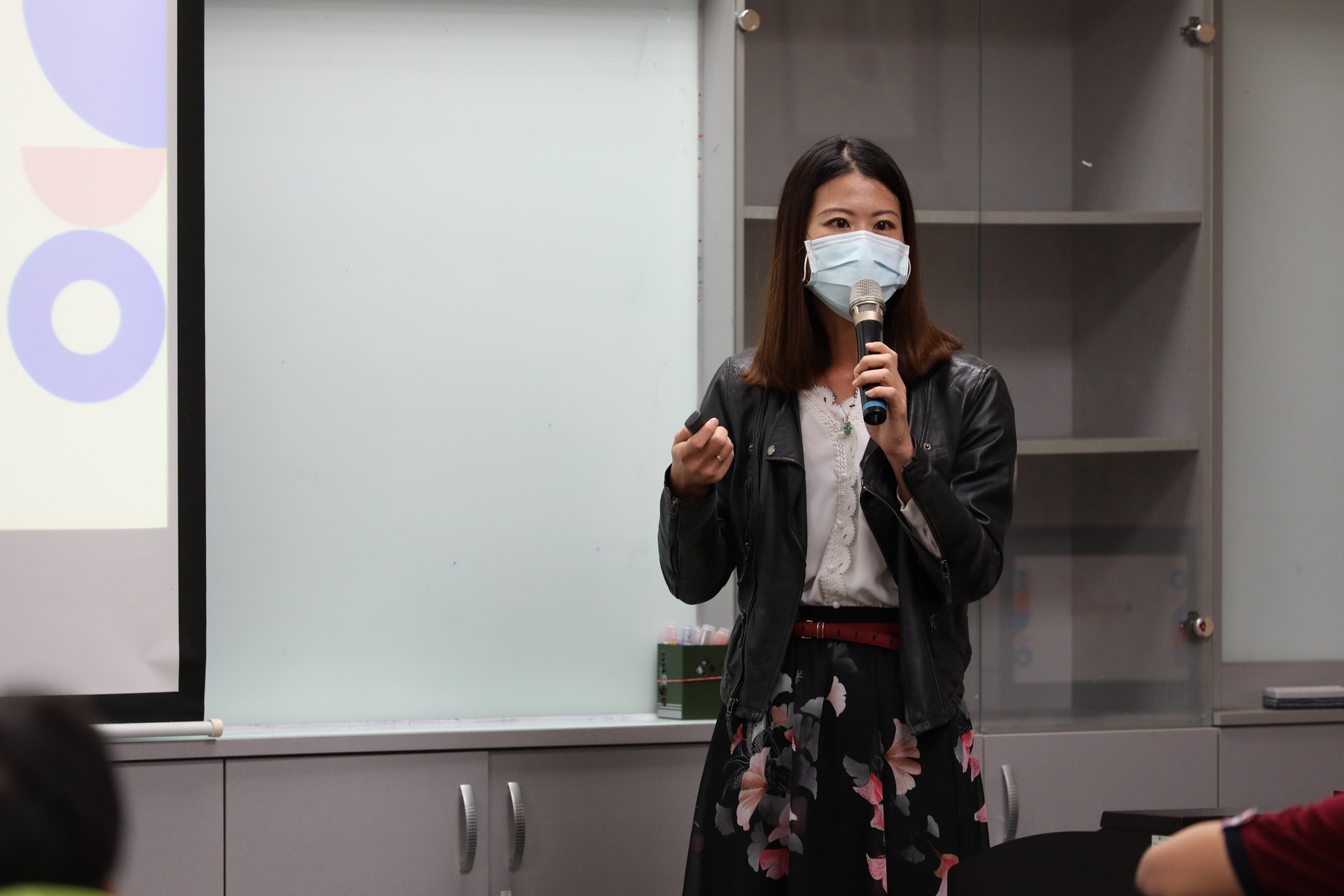
2022-01-10
(Provided by Teaching and Learning Development and Resources Center) The Teaching and Learning Development and Resources Center at NSYSU organized a meeting for teachers participating in the Teaching Practice Research Program (TPRP) to share their experiences and let others gain a preliminary understanding of TPRP. Professor Tong-Yu Hsieh, the Associate Vice President for Academic Affairs, pointed out that asking questions on spot is the core of teaching practice research and many projects failed in the past because teachers treated them like lesson plans rather than research plans for problems.
Associate Professor Pei-Shih Weng of the Department of Finance, who had a highlighted teaching practice research project accepted, shared that he was also confused about the core issues of TPRP when he first applied, and so he combined his research area – behavioral economics with students' classroom behavior in an attempt to change students' bad habits in class. According to Professor Weng’s analysis, teachers of social sciences can try to combine their own research with teaching practice: not only is this field suitable for such an experiment but also lets teachers bring their own research strengths into play.
Assistant Professor Chih-Yuan Wang of the Department of Business Administration, who has achieved excellent results and had highlighted projects approved for four consecutive years, believes that TPRPs are practical in nature and so theoretical perspectives are not as important. He believes that teachers can divide their classes into two categories: those with good student responses and those with poor responses; both are suitable for research projects. Professor Wang said that classes with poor student responses can give the teacher the motivation to improve their teaching method, while those with good responses can be planned in accordance with previous improvement experience. Professor Wang advised against too ambitious project goals: otherwise, the effectiveness might be too difficult to measure.
Professor Yu-Chung Chiang, Chair of the Department of Biological Sciences, who started his TPRP in 2021, pointed out that it takes some effort to enhance students' learning effectiveness and motivation for self-learning. Therefore, he began to use case studies, small group projects, and research projects to encourage students to learn. Professor Chiang also shared the process of designing the course content. At first, he was very confused and had no idea how to write the teaching flow chart. He later found out that he was used to teaching the course in blocks, but did not turn the teaching process into numerical data that could be analyzed, which was what he was trying to solve in his project.
Professor Shiu-Ming Huang of the Department of Physics shared the results of applying for TPRP for laboratory classes over the years. He believes that the project should concentrate on issues in classrooms that can be improved, and that the project should be problem-oriented. He explained that traditional education in laboratory classes is based on “recipes”, so he built a system from scratch to verify the physics objectives set, and added a cloud-based interactive platform to provide opportunities for students to exchange. He also mentioned that the problems encountered in past projects can be turned into future research problems and can help improve teaching.
The research project by Assistant Professor Ping-Chen Tsai of the Department of Finance aims to solve the problem of insufficient number of students for courses in English. He pointed out that the goal of TPRC is to use immersive teaching for the students to understand that learning international finance and financial management in English can be a natural and efficient way to learn, and give them ample opportunities to use the knowledge and tools acquired in real-life examples and activities.
Assistant Professor Yu-Hsuan Wang of the Institute of Human Resource Management shared the project compilation process in four steps. She started from explaining the importance of the issue and then elaborated on the topic of TPRP based on the qualitative feedback from course students over the past three years. Secondly, to find a clear structure and step-by-step teaching method, a review of literature from top journals can make the writing process twice as effective. Then, she advised avoiding ethical review in research practice. Teachers can design the research considering the differences between the same group before and after class. Finally, when measuring effectiveness, Professor Wang used rubric evaluation index, commonly used in management schools as the basis, rather than student satisfaction or grades, which she believes can be applied to other fields as well.
Assistant Professor Cheng-Hsiung Hsieh of the Institute of Public Affairs Management introduced the project-based TPRP. He used the PBL community experiential learning model with design thinking teaching method to explore students’ learning outcomes of the experiential learning in public affairs management practice. Professor Hsieh believes that the greatest impact of the TPRP on his teaching was the deepening of his reflection on teaching and learning through student feedback and the PBL teaching method, which allowed him to focus on problem-solving strategies in his teaching.
Assistant Professor Shu-Mei Chang of the Program in Interdisciplinary Studies believes that the most difficult thing is problem awareness, and she shared how she got inspired for her TPRP. Professor Chang gave an example. One of the most common insights that the students gained during her classes was the experience of interacting with people from different fields. But when the students would avoid grouping across domains, it was then that they would come up with research problems. Professor Chang emphasized that by understanding what happens in the classroom and remembering the feedback given by the students, the teacher can come up with endless research problems .
Professor Wen-Chiang Liu of the Department of Chinese Literature has a method for applying Big Data: he integrates digital technology and assessment into traditional Chinese language education to transform freshmen education. Professor Liu explained that this year, he also started to collect students' feedback on each lesson in class and analyze students' performance from a large amount of data. He also emphasized that although classes about languages and literature may seem distant from technology, this field needs proper hardware tools to keep up with future trends.
Assistant Professor Hao-Ching Hsia of the Program in Interdisciplinary Studies advised all university professors to apply for TPRP and give themselves an opportunity to review and advance their teaching skills. He also shared that students' performance can be used as a starting point for problem formulation and that there are hundreds of different kinds of students that can find various problems, stimulate research with teaching, and respond to teaching with research. As for teaching theory, Professor Hsia believes that doctoral students of the Institute of Education can collaborate in this aspect and provide information on education theory and proper nouns, which will turn useful in compiling the project plan.
Assistant Professor Koching Chao of Si Wan College talked about how she figured out how to integrate full English-language teaching into a professional course. She recommended that teachers use English as the medium of instruction and try introducing Content and Language Integrated Learning (CLIL) to examine the extent to which students absorb professional competencies in English-taught classes. Finally, Professor Chao emphasized that choosing a specific teaching method and following guidelines step by step in designing the teaching process can help the teacher to not get lost.
(Edited by Public Affairs Division)
(Provided by Teaching and Learning Development and Resources Center) The Teaching and Learning Development and Resources Center at NSYSU organized a meeting for teachers participating in the Teaching Practice Research Program (TPRP) to share their experiences and let others gain a preliminary understanding of TPRP. Professor Tong-Yu Hsieh, the Associate Vice President for Academic Affairs, pointed out that asking questions on spot is the core of teaching practice research and many projects failed in the past because teachers treated them like lesson plans rather than research plans for problems.
Associate Professor Pei-Shih Weng of the Department of Finance, who had a highlighted teaching practice research project accepted, shared that he was also confused about the core issues of TPRP when he first applied, and so he combined his research area – behavioral economics with students' classroom behavior in an attempt to change students' bad habits in class. According to Professor Weng’s analysis, teachers of social sciences can try to combine their own research with teaching practice: not only is this field suitable for such an experiment but also lets teachers bring their own research strengths into play.
Assistant Professor Chih-Yuan Wang of the Department of Business Administration, who has achieved excellent results and had highlighted projects approved for four consecutive years, believes that TPRPs are practical in nature and so theoretical perspectives are not as important. He believes that teachers can divide their classes into two categories: those with good student responses and those with poor responses; both are suitable for research projects. Professor Wang said that classes with poor student responses can give the teacher the motivation to improve their teaching method, while those with good responses can be planned in accordance with previous improvement experience. Professor Wang advised against too ambitious project goals: otherwise, the effectiveness might be too difficult to measure.
Professor Yu-Chung Chiang, Chair of the Department of Biological Sciences, who started his TPRP in 2021, pointed out that it takes some effort to enhance students' learning effectiveness and motivation for self-learning. Therefore, he began to use case studies, small group projects, and research projects to encourage students to learn. Professor Chiang also shared the process of designing the course content. At first, he was very confused and had no idea how to write the teaching flow chart. He later found out that he was used to teaching the course in blocks, but did not turn the teaching process into numerical data that could be analyzed, which was what he was trying to solve in his project.
Professor Shiu-Ming Huang of the Department of Physics shared the results of applying for TPRP for laboratory classes over the years. He believes that the project should concentrate on issues in classrooms that can be improved, and that the project should be problem-oriented. He explained that traditional education in laboratory classes is based on “recipes”, so he built a system from scratch to verify the physics objectives set, and added a cloud-based interactive platform to provide opportunities for students to exchange. He also mentioned that the problems encountered in past projects can be turned into future research problems and can help improve teaching.
The research project by Assistant Professor Ping-Chen Tsai of the Department of Finance aims to solve the problem of insufficient number of students for courses in English. He pointed out that the goal of TPRC is to use immersive teaching for the students to understand that learning international finance and financial management in English can be a natural and efficient way to learn, and give them ample opportunities to use the knowledge and tools acquired in real-life examples and activities.
Assistant Professor Yu-Hsuan Wang of the Institute of Human Resource Management shared the project compilation process in four steps. She started from explaining the importance of the issue and then elaborated on the topic of TPRP based on the qualitative feedback from course students over the past three years. Secondly, to find a clear structure and step-by-step teaching method, a review of literature from top journals can make the writing process twice as effective. Then, she advised avoiding ethical review in research practice. Teachers can design the research considering the differences between the same group before and after class. Finally, when measuring effectiveness, Professor Wang used rubric evaluation index, commonly used in management schools as the basis, rather than student satisfaction or grades, which she believes can be applied to other fields as well.
Assistant Professor Cheng-Hsiung Hsieh of the Institute of Public Affairs Management introduced the project-based TPRP. He used the PBL community experiential learning model with design thinking teaching method to explore students’ learning outcomes of the experiential learning in public affairs management practice. Professor Hsieh believes that the greatest impact of the TPRP on his teaching was the deepening of his reflection on teaching and learning through student feedback and the PBL teaching method, which allowed him to focus on problem-solving strategies in his teaching.
Assistant Professor Shu-Mei Chang of the Program in Interdisciplinary Studies believes that the most difficult thing is problem awareness, and she shared how she got inspired for her TPRP. Professor Chang gave an example. One of the most common insights that the students gained during her classes was the experience of interacting with people from different fields. But when the students would avoid grouping across domains, it was then that they would come up with research problems. Professor Chang emphasized that by understanding what happens in the classroom and remembering the feedback given by the students, the teacher can come up with endless research problems .
Professor Wen-Chiang Liu of the Department of Chinese Literature has a method for applying Big Data: he integrates digital technology and assessment into traditional Chinese language education to transform freshmen education. Professor Liu explained that this year, he also started to collect students' feedback on each lesson in class and analyze students' performance from a large amount of data. He also emphasized that although classes about languages and literature may seem distant from technology, this field needs proper hardware tools to keep up with future trends.
Assistant Professor Hao-Ching Hsia of the Program in Interdisciplinary Studies advised all university professors to apply for TPRP and give themselves an opportunity to review and advance their teaching skills. He also shared that students' performance can be used as a starting point for problem formulation and that there are hundreds of different kinds of students that can find various problems, stimulate research with teaching, and respond to teaching with research. As for teaching theory, Professor Hsia believes that doctoral students of the Institute of Education can collaborate in this aspect and provide information on education theory and proper nouns, which will turn useful in compiling the project plan.
Assistant Professor Koching Chao of Si Wan College talked about how she figured out how to integrate full English-language teaching into a professional course. She recommended that teachers use English as the medium of instruction and try introducing Content and Language Integrated Learning (CLIL) to examine the extent to which students absorb professional competencies in English-taught classes. Finally, Professor Chao emphasized that choosing a specific teaching method and following guidelines step by step in designing the teaching process can help the teacher to not get lost.
(Edited by Public Affairs Division)
Click Num:
Share
